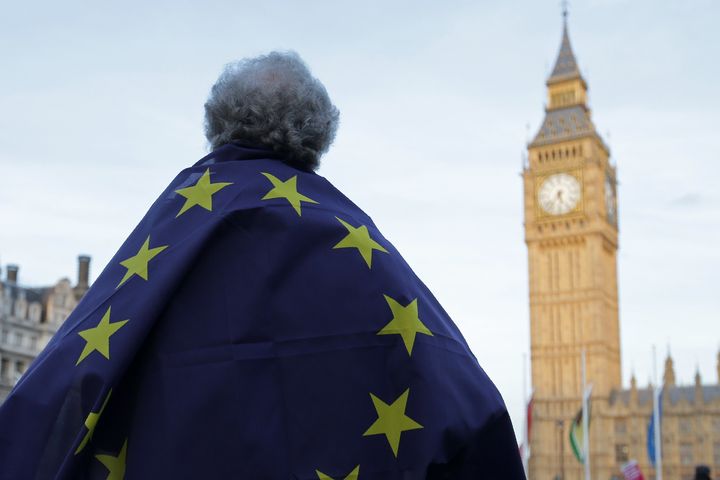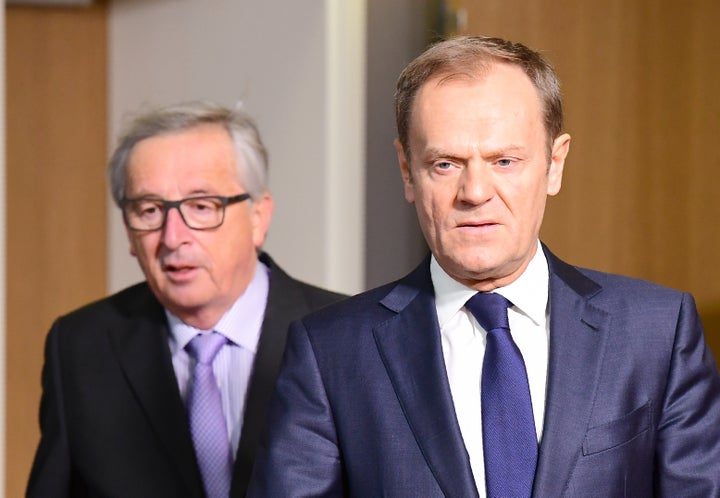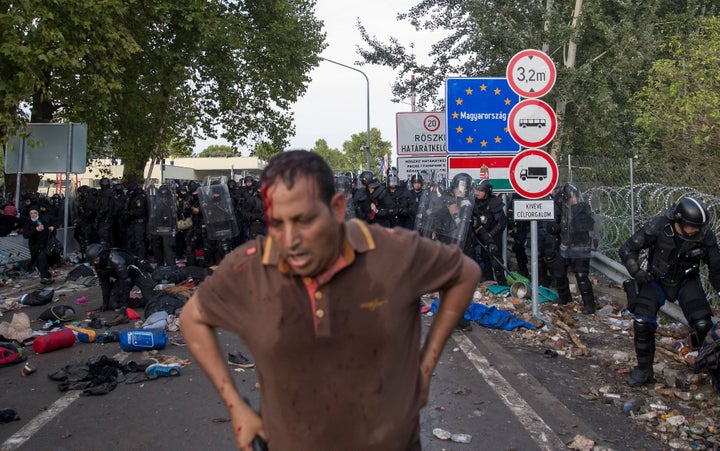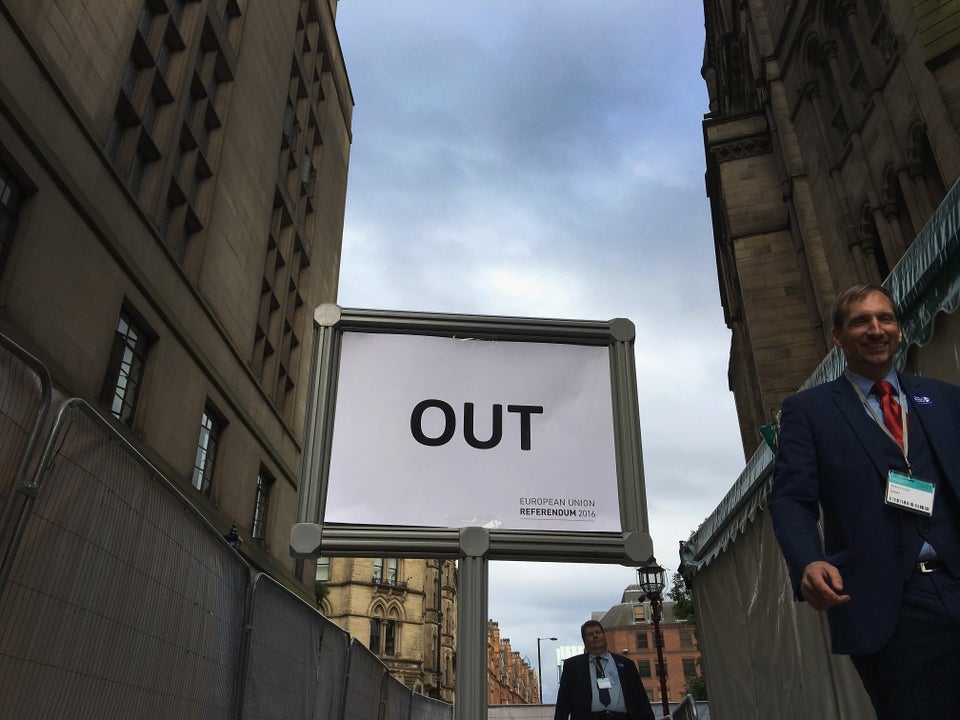
BRUSSELS ― As European leaders gather in the Italian capital to mark the 60th anniversary of the Treaty of Rome and discuss the future of the European Union, a dark cloud of populism and a looming Brexit threaten to cast a shadow over the already fracturing continental unity.
In steadier times, the commemoration might have been little more than a photo op. But the political tremors of 2016 have left a scar on the bloc, peaking in the United Kingdom’s vote last June to leave the European Union ― an action which will be triggered just days after the Rome celebration.
The EU is now faced with the major challenge of preventing Brexit from becoming a success story for the U.K., while at the same time maintaining a good-natured relationship with Britain. This on top of dealing with the ongoing refugee crisis and the rise of the far-right across parts of the continent. And the terror attack in London on Wednesday, which occurred exactly one year after a deadly attack on Brussels, made it painfully clear that terrorism also continues to shape Europe’s political discourse.
“The EU needs a revamp to reconcile the liberal and the nationalist camps ― and it needs it fast.”
The body is in desperate need of a concrete path forward. It needs to reassess its priorities and members need a clear vision behind which to unite. In short, the EU needs a revamp to reconcile the liberal and the nationalist camps ― and it needs it fast.
In light of these challenges, the European Commission, in a white paper published on March 1st, outlined not one, but five possible scenarios on what the EU might look like in 2025.
The plans listed fall on both ends of the political spectrum, from engaging more heavily as a European unit, to allowing members to function in a more independent manner. And while these plans are being made, there are prominent questions from within the EU as to who is making them and if the nations in charge are even able to maintain fair and nondiscriminatory policies within their own countries, let alone for the entirety of the EU.

The vast range of options is one of the many reasons that European Commission President Jean-Claude Juncker has often been criticized for not being able to articulate a clear vision for Europe. But this disarray reflects very well the current state of affairs in Europe, too. The member states are far from having a consistent idea on the future of the EU, in part because of the division between some of the “old” member states and some of the newer ones, particularly those in Eastern Europe.
When it comes to a path forward, Germany, France, Spain and Italy favor the so-called “multi-speed Europe,” in which member states that are willing to further integrate in specific policy areas can do so, even if other member states decide not to participate.
Poland, Hungary, Slovakia and the Czech Republic, which are organized in the informal “Visegrad Group,” on the other hand, reject the notion of more influence for the European Union and demand that substantial powers are handed back to nation states. They fear that a multi-speed Europe would sideline smaller member states and create a two-class society within the EU.
“Curtailing human rights and promoting anti-Muslim sentiment has not only throttled the speed of the European car, but also changed it into reverse gear.”
In fact, in recent years, the nationalist-conservative governments in Poland and Hungary didn’t miss a chance to show their resistance to EU policies, which they allege are almost fully dictated by Brussels and Berlin. Emboldened by the nationalist sentiments across Europe, the countries boycotted a humane European solution for the refugee crisis and introduced a series of authoritarian measures, targeting the judiciary, the media and minorities.
Enraged by the re-election of arch enemy and ex-Prime Minister Donald Tusk as European Council president, the Polish government also vowed to block the summit’s final statement and performed a bizarre rant that would have made U.S. President Donald Trump jealous. Albeit having been a petty fight motivated by Polish domestic politics, it was the latest reminder of the extreme tension between the two camps within the EU.
Despite the Polish resistance showcased through Tusk at the Brussels summit earlier this month, the expected “Rome declaration” will likely be more or less in line with the ideas of the “old Europe,” and incorporate aspects of policies aimed at maintaining the general status quo while leaving member states the option to move forward in a “coalitions of the willing.” This might include an enhanced European defense policy and efforts to give the eurozone a sturdier design in light of future economic crises.

If this meeting amounts merely to more of the same, it will fail to recognize the threats this continent faces and acknowledge the crucial ideals of the union that continue to be forsaken as this identity battle drags on.
The fact of the matter is that a multi-speed Europe is already a reality. And this is not only true for the eurozone and the Schengen area to which not all member states are parties.
By curtailing human rights and promoting anti-Muslim sentiment, the Visegrad Four have not only throttled the speed of the European car, but also changed it into reverse gear.
“The future of the EU won’t be decided in Brussels or national capitals but in the minds of its citizens.”
At the same time, we must be careful to understand that a multi-speed Europe cannot become an excuse to deny people in one country of the union the same fundamental rights as those in another country.
It is also important to realize that for the mostly young pro-Europeans, the EU is about more than the single market, the euro, free trade or customs duties ― it is the ideal of a common space of freedom, democracy and peace. And acting upon this ideal and guaranteeing that the core European values are upheld in the entire union is key to mobilizing the pro-European forces and fending off the rising nationalism that risks further splintering the body.
It is my hope that the EU will not compromise these ideals in order to move forward in other areas. Because ultimately, the future of the European Union won’t be decided in Brussels or national capitals. It will be decided in the minds of its citizens.

